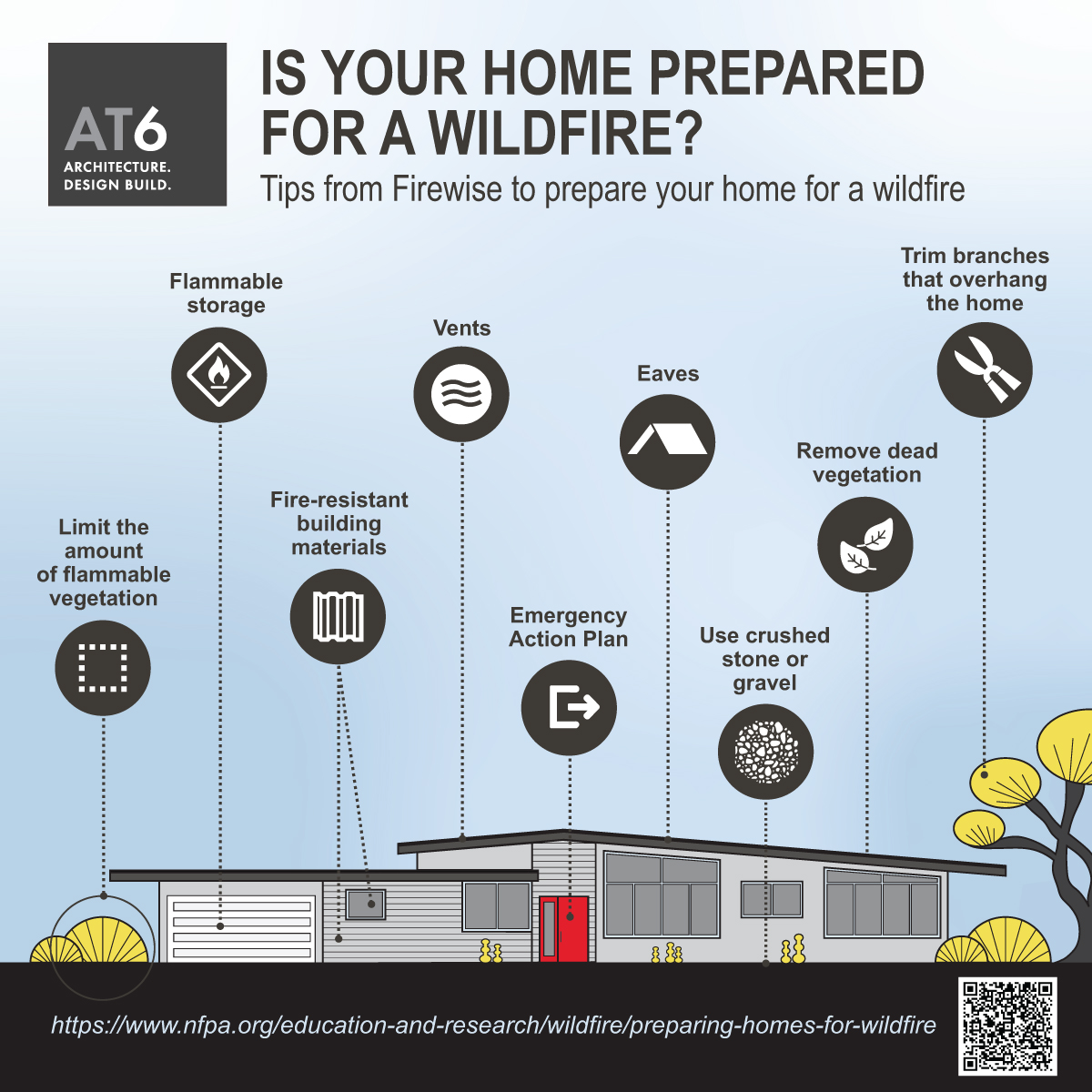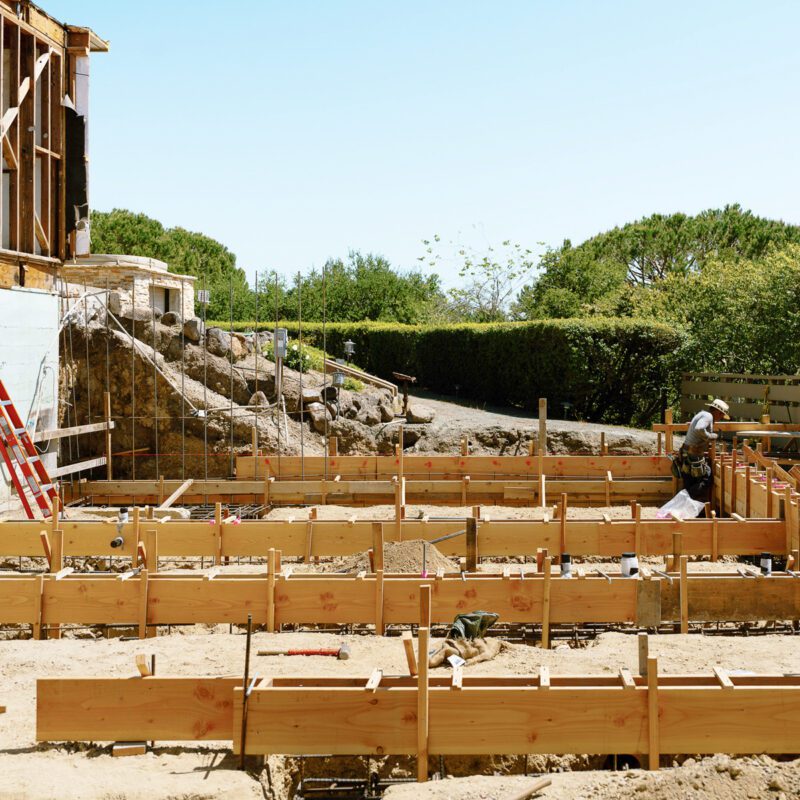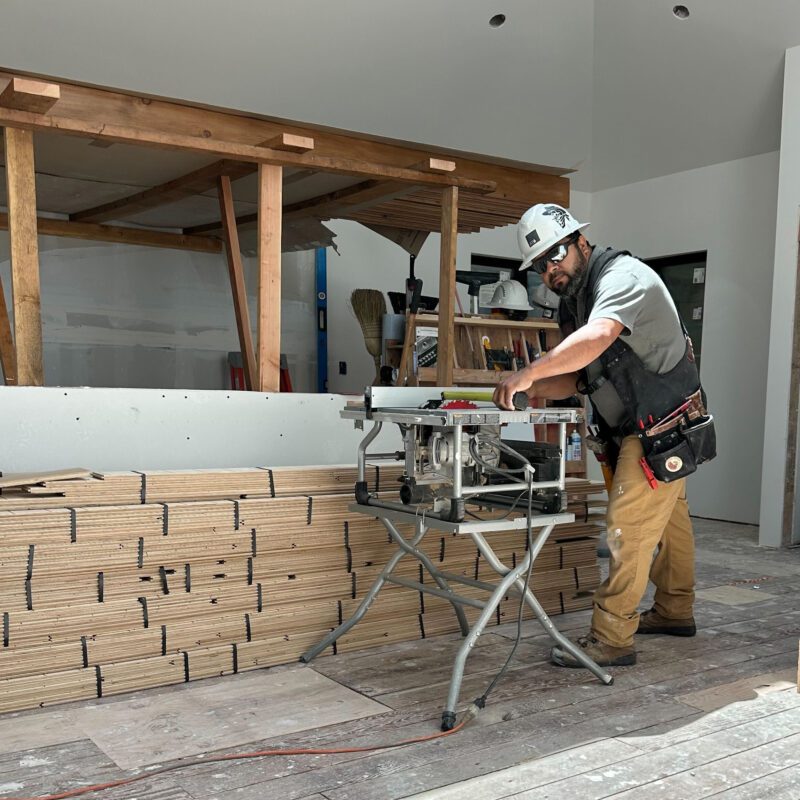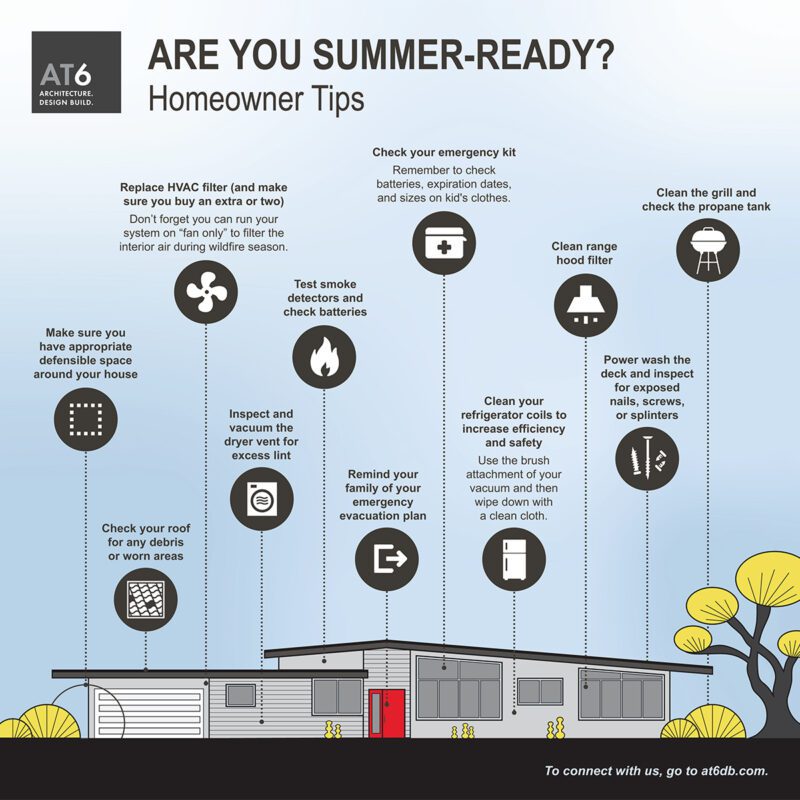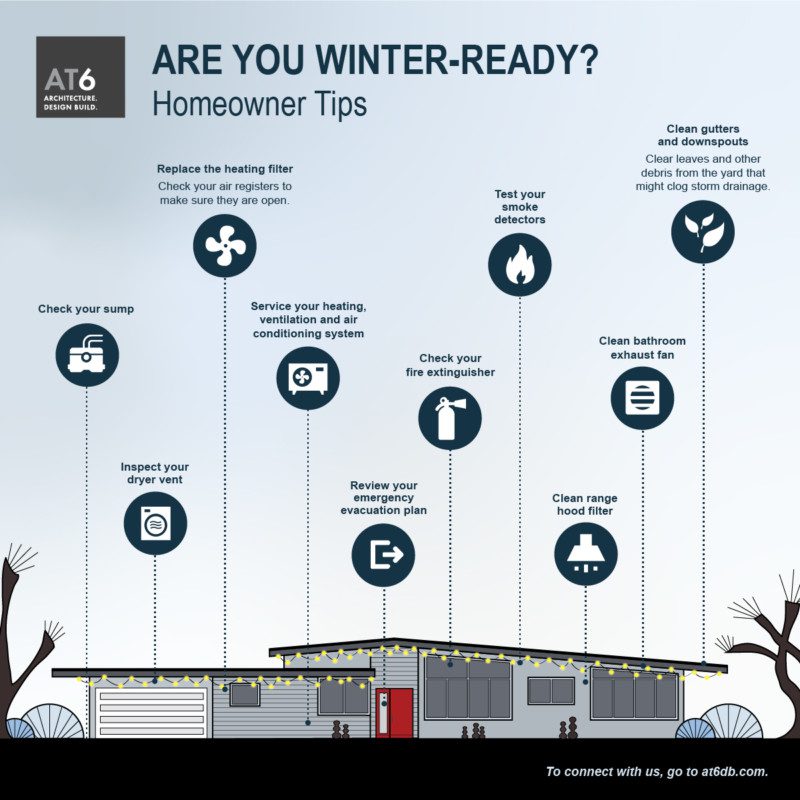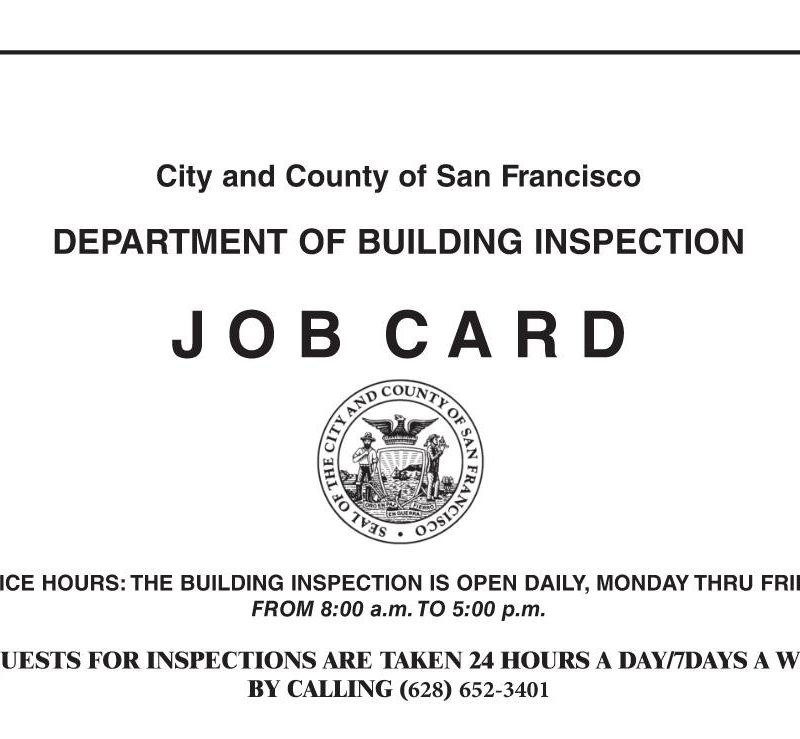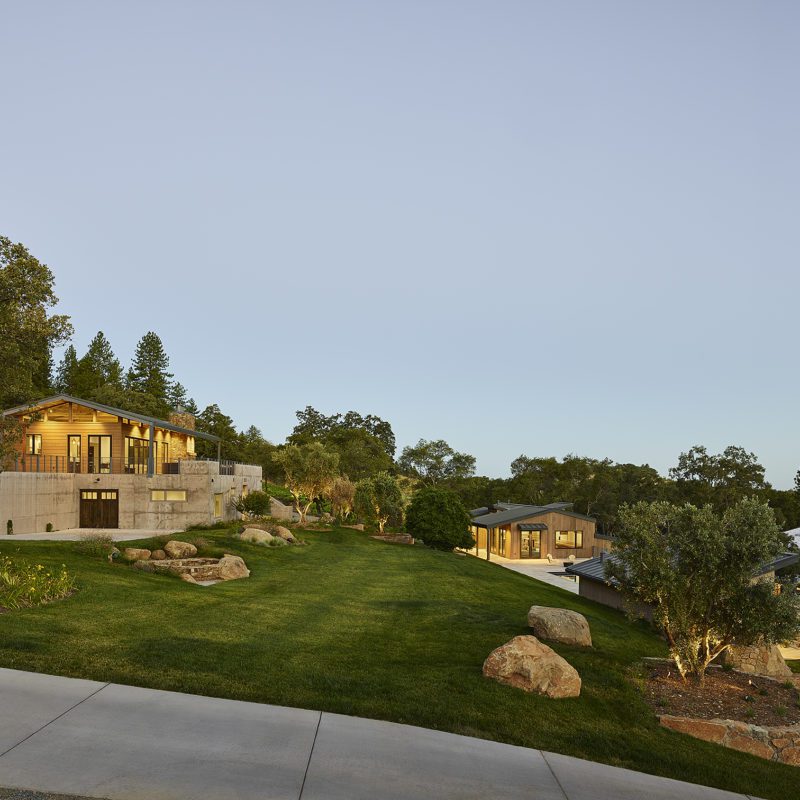When AT6 Founder Jason Langkammerer bought a home in Lafayette, California, he knew that wildfire preparedness would have to factor into his renovation. As the recent Los Angeles fires showed, urban communities are not immune to wildfire threats, and preparing your home for wildfires has become a necessity throughout the West.
Because wildfires have become a regular occurrence, there are numerous home-protection resources online. Firewise USA, a program of the National Fire Protection Association, has easily accessible information including how you can identify and mitigate primary sources of ignition. In the face of increasing wildfire risks driven by climate change and prolonged drought conditions, this preparation is essential.
The following nine steps combine core Firewise USA principles with additional insights we’ve gathered from online research.
9 critical steps that can help safeguard your home during wildfire season.
1. Limit the amount of flammable vegetation. Limit the amount of flammable vegetation (0 to 5 feet around the house), Remove plants containing resins, oils, and waxes. See more at https://www.fire.ca.gov/dspace
2. Fire-resistant building materials. To increase your home’s chance of surviving a wildfire, choose fire-resistant building materials such as brick, fiber-cement, plaster, or stucco, and use dual-pane tempered glass windows. Find out more here https://clmfireproofing.com/best-fire-resistant-building-materials/
3. Use crushed stone or gravel. Use crushed stone or gravel instead of flammable mulches in the Immediate Zone. Keep your landscape in good condition. https://readyforwildfire.org/prepare-for-wildfire/fire-smart-landscaping/
4. Eaves. Box in eaves, but provide ventilation to prevent condensation and mildew. https://firesafemarin.org/harden-your-home/fire-resistant-soffits-eaves/
5. Vents. Roof and attic vents should be screened to prevent ember entry. https://firesafemarin.org/harden-your-home/fire-resistant-vents/
6. Flammable storage. Never store flammable materials underneath decks or porches. https://firesafemarin.org/harden-your-home/fire-resistant-decks-patios-porches/
7. Remove dead vegetation. Remove dead vegetation and debris from under decks and porches, in gutters, and between deck board joints
8. Emergency action plan. Develop, discuss, and practice an emergency action plan with everyone in your home. Include details for handling pets. Know two ways out of your neighborhood and have a predesignated meeting place. Always evacuate if you feel it’s unsafe to stay—don’t wait to receive an emergency notification if you feel threatened by the fire. https://readyforwildfire.org/prepare-for-wildfire/wildfire-action-plan/
9. Trim branches that overhang the home. To reduce ember ignitions and fire spread, trim branches that overhang the home, porch, and deck and prune branches of large trees up to 6 to 10 feet (depending on their height) from the ground. https://firesafemarin.org/programs/home-evaluation/remove-tree-limbs-overhanging-structure/
